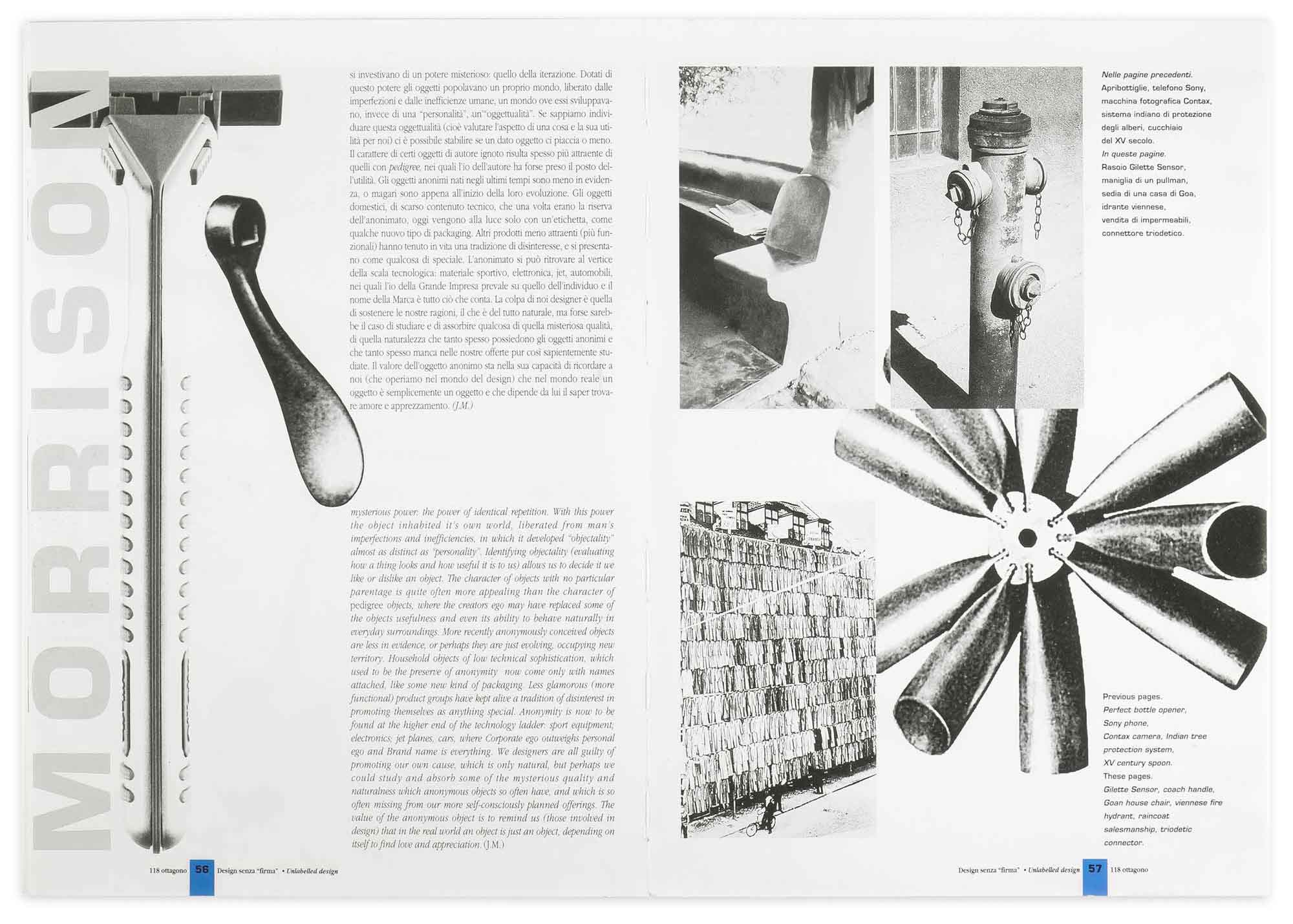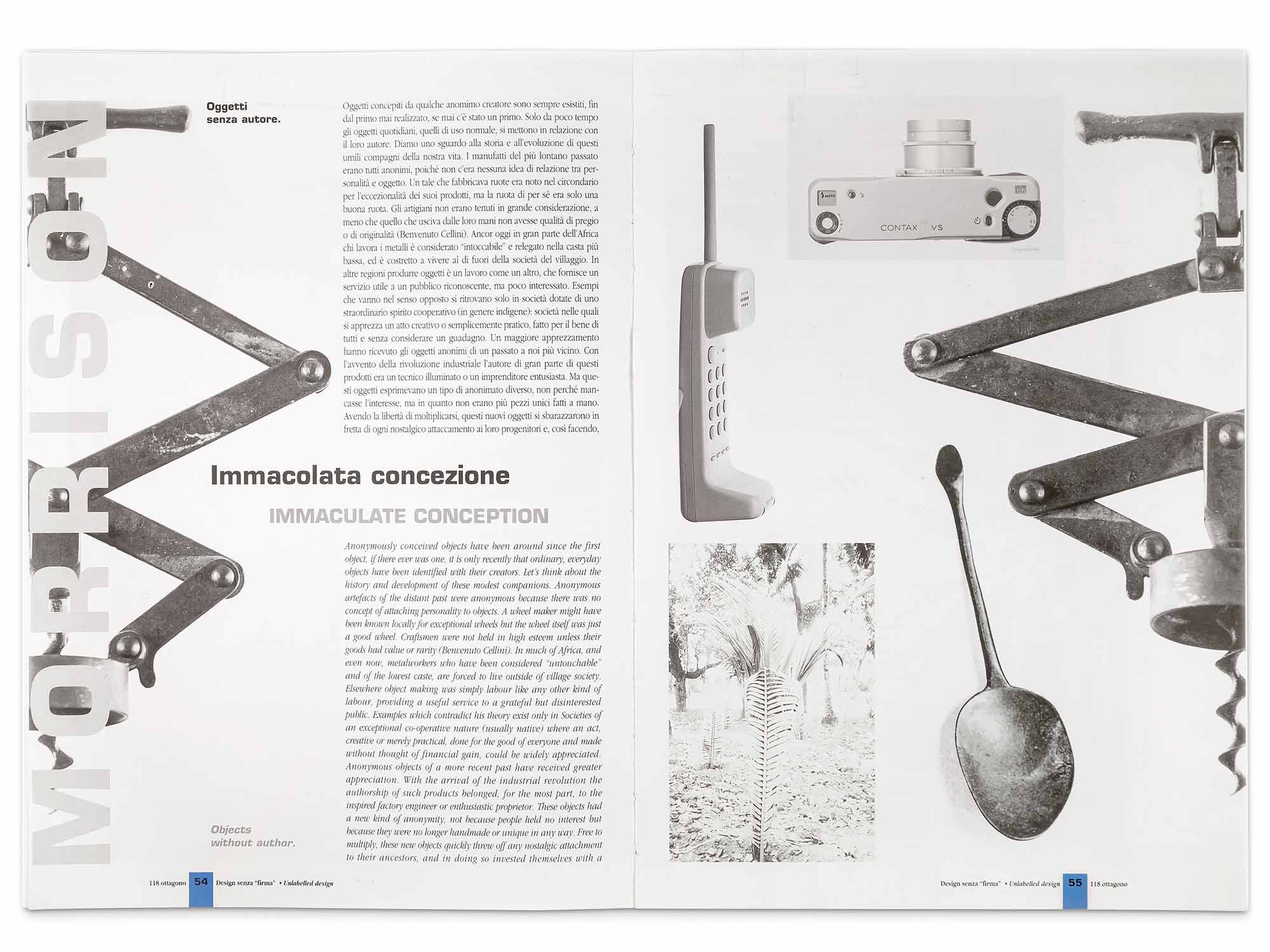
Anonymously conceived objects have been around since the first object, if there ever was one; it is only recently that ordinary, everyday objects have been identified with their creators. So what about the history and development of these modest companions?
Anonymous artefacts of the distant past were anonymous because there was no concept of attaching personality to useful objects. A wheel maker might have been known locally for the exceptional quality of his work but the wheel itself was just a good wheel. Craftsmen were not held in high esteem unless their goods had value or rarity (Benvenuto Cellini). Object making was simply labour like any other kind of labour, providing a useful service to a grateful but disinterested public. Examples which contradict this theory exist only in societies of an exceptional, co-operative nature (usually native) where an act, creative or merely practical, done for the good of everyone and made without thought of financial gain, could be widely appreciated.
Anonymous objects of a more recent past have received greater appreciation. With the arrival of the industrial revolution the authorship of such products belonged, for the most part, to the inspired factory engineer or enthusiastic industrialist. These objects had a new kind of anonymity, not because people held no interest but because they were no longer handmade or unique in any way. Free to multiply, these new objects quickly threw off any nostalgic attachment to their ancestors, and in doing so invested themselves with a mysterious power: the power of identical repetition. With this power the object inhabited its own world, liberated from man's imperfections and inefficiencies, in which it developed an "objectality" almost as distinct as a "personality". Identifying objectality (evaluating the appeal of a thing and how useful it is to us) allows us to decide if we like or dislike an object. The character of objects with no particular parentage is quite often more appealing than the character of "pedigree" objects, where the creator's ego may have replaced some of the object's usefulness and even its ability to behave naturally in everyday surroundings.
More recently, anonymously conceived objects are less in evidence, or perhaps they are just evolving, occupying new territory. Household objects of low technical sophistication, which used to be the preserve of anonymity now come only with names attached, like some new kind of packaging. Marketing executives push designers for product individuality and USPs (unique selling points) often to the detriment of a design. Less glamorous (more functional) product groups have kept alive a tradition of disinterest in promoting themselves as anything special. Anonymity is now to be found at the higher end of the technology ladder: sports equipment, electronics, vehicles, where corporate ego outweighs personal ego and brand name is everything.
We designers are all guilty of promoting our own cause, which is only natural, but perhaps we could study and absorb some of the mysterious quality and naturalness which anonymous objects, free of their author's ego, so often have, and which is so often missing from our more self-consciously planned offerings. The value of the anonymous object is to remind us (those involved in design) that in the real world an object is just an object that depends on its long-term usefulness for survival.
